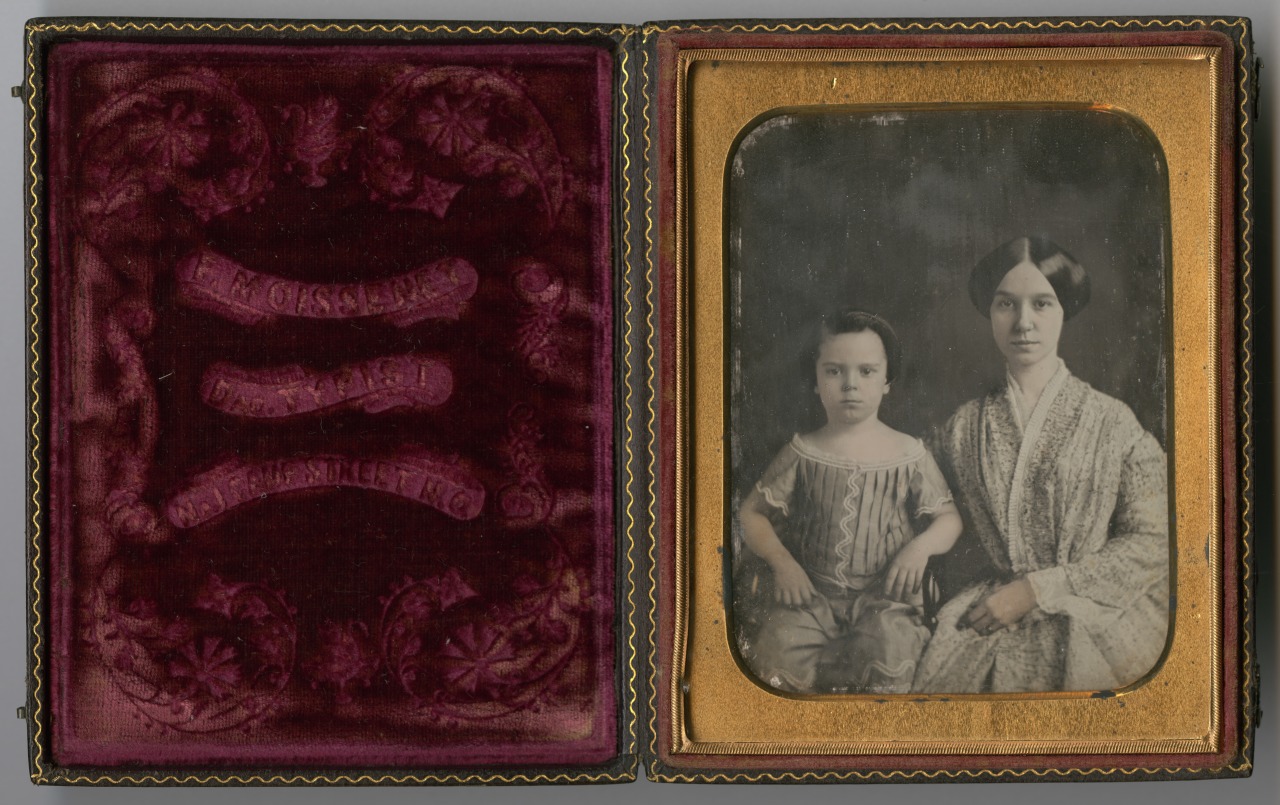The daguerreotype process made it possible to capture the image seen inside a camera obscura and preserve it as an object. It was the first practical photographic process and ushered in a new age of pictorial possibility.
The process was invented in 1837 by Louis Jacques Mandé Daguerre (1787–1851). In his work as a theatrical scene painter, Daguerre was familiar with the camera obscura, a device used to project the image of a brightly lit scene into a dark chamber. On August 19, 1839, Dominique Francois Arago, a French scientist and friend of Daguerre’s, announced Daguerre’s invention to the Académie des Sciences and the Académie des Beaux-Arts in Paris. Daguerre later wrote a seventy-nine-page booklet, Historique et description du procédé du Daguérreotype et du Diorama. In March 1840, Jules Lion introduced the daguerreotype to New Orleans.
The daguerreotype process produces a highly detailed, unique object. It is a direct-positive process, meaning no negative is made. To make a daguerreotype, a sheet of copper is plated with a thin coat of silver. This plate is then cleaned and polished to a mirror finish. Next, it is sensitized in a lighttight box with iodine and bromine vapors until its surface turns yellow. The reaction between the iodine vapor and the silver coating produces light-sensitive silver iodide.
Once sensitized, the plate is kept in a lightproof container and inserted directly into a camera, where the exposure is made. Development is then accomplished by placing the exposed plate face down over a source of heated mercury fumes until the image appears. Chemically, the mercury merges, or amalgamates, with the silver creating a milky white image. The image is fixed (prevented from undergoing further development) in a solution of sodium chloride, or table salt. Later, sodium thiosulfate (hyposulfite of soda or hypo) filled this role. The plate is treated or “toned” with gold chloride, which intensifies the image. Finally, the plate is washed in distilled water and dried.
Exposure times for early daguerreotypes ranged from three to fifteen minutes, but after improvements to lenses and the introduction of bromine, which increases the sensitivity of the silver compounds on the plate, it was possible to make a portrait with an exposure of about one minute.
Initially, daguerreotypes were presented to the sitter in a book-like case of embossed paper or leather. The fragile plate was protected by a “cover glass” and sealed inside a preserver frame and brass mat. Later, the Union case, as it was known, was molded from a thermoplastic material.
Due to the nature of the process, daguerreotypes are mirror images of their subjects, reversed from right to left. This illusion is barely noticeable in portraits but quite apparent in urban views or any images containing lettering.

James Curtis Waldo and his wife, Margaret Mary Woods
half-plate daguerreotype; ca. 1860
by an unknown photographer
The Historic New Orleans Collection, 1982.198

Alexis Cassimere Dumestre, riverboat captain
quarter-plate daguerreotype; ca. 1855
by Edward Jacobs
The Historic New Orleans Collection, 1983.37.1

Plantation house, possibly Madewood
quarter-plate daguerreotype; ca. 1855
by an unknown photographer
The Historic New Orleans Collection, 1999.115 a,b

Mother and child
quarter-plate daguerreotype; between 1850 and 1854
by Félix Moissenet
The Historic New Orleans Collection, 1983.44.3
